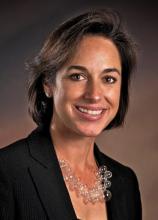Nearly 80% of office-based physicians had adopted some type of electronic health record system in 2013, according to figures from the Centers for Disease Control and Prevention.
Findings from the report, which is based on a survey of about 10,000 office-based physicians, show that adoption has skyrocketed over the past decade. Between 2001 and 2013, the use of any type of electronic health record (EHR) system jumped from 18% to 78%. And adoption climbed from 48% to 78% between 2009 and 2013, following the enactment of the Health Information Technology for Economic and Clinical Health (HITECH) Act in 2009, which allowed the federal government to make bonus payments to physicians for adopting certified EHR systems.
Even the use of more advanced systems that include a set of "basic" functionals has increased. Those basic systems include computerized orders for prescriptions, the ability to view laboratory and imaging results electronically, a comprehensive list of a patient’s medications and allergies, physician notes, problem lists, and patient history and demographics.
In 2013, nearly half (48%) of physicians reported having an EHR system that met the criteria for a basic system. That’s up from 11% in 2006, the first year that the CDC collected data on basic systems.
But adoption of EHRs varies greatly by geography. The lowest adoption rate for a basic EHR system was in New Jersey (21%), and the highest was in North Dakota (83%).
Physician interest in the Medicare and Medicaid Incentive Programs is also high, according to the survey results. But the ability to meet the "meaningful use" criteria lags behind the interest. In 2013, 69% of physicians reported that they intended to participate in the incentive programs. But only 13% of physicians both intended to participate in the programs and had an EHR system capable of meeting most of the Stage 2 core requirements of meaningful use.
But Dr. Karen DeSalvo, the new National Coordinator for Health Information Technology of the Department of Health and Human Services, said the survey results show that the incentive programs are "healthy and growing steadily." In a blog post about the survey, Dr. DeSalvo said even the fact that only 13% of physicians could meet Stage 2 requirements in 2013 is a good sign, since it means that they were ready for Stage 2 a year ahead of schedule.
"The deadline to begin attesting for Meaningful Use Stage 2 is October 2014 for the earliest adopters of Meaningful Use Stage 1, so more than one in ten physicians decided on their own to participate [in] Meaningful Use Stage 2 capabilities more than a year earlier than necessary," Dr. DeSalvo wrote. "These are early adopters who recognize the benefits of EHRs."


